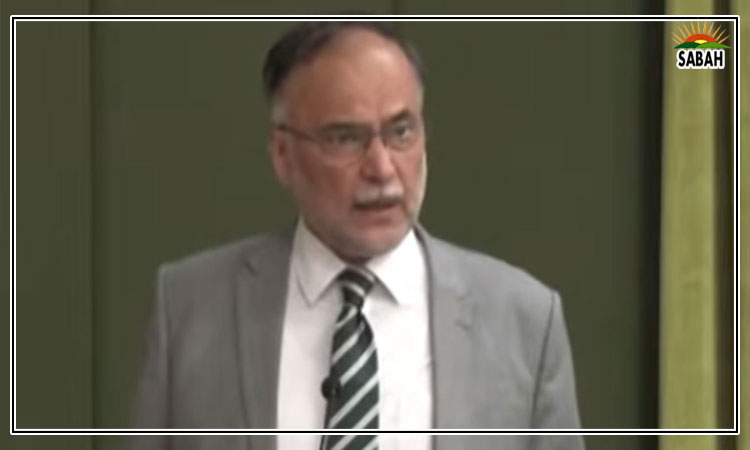The retroactive trap ۔۔۔Khuzair Raheem
A controversial amendment to the Elections Act, 2017 was signed into law, upon receiving the president’s assent on the 8th of August, 2024, thereby concluding the legislative process.
The Elections (Second Amendment) Act, 2024 purports to: (i) bar returned independent candidates from joining a political party unless they declare affiliation prior to symbol allocation (amending Section 66); (ii) invalidate reserved seats for political parties that miss the filing deadline (amending Section 104); and (iii) make independent candidates’ consent to join a party irrevocable (inserting Section 104A).
The Act enforces that a candidate is deemed independent without a pre-symbol declaration, while those who declare are bound by it. To add spice to the mix, the Act applies these amendments retroactively, extending back to the very inception of the Elections Act in 2017. This retroactive aspect is the primary focus of this opinion.
To grasp the retroactive implications, one must first consider the legislators’ intent and the controversy over the inclusion of non-obstante ouster clauses within the Act. These clauses are particularly problematic given that the legislation was enacted in direct response to a Supreme Court ruling on the very matter it seeks to address.
The short order rendered by the 13-member Supreme Court bench in ‘Sunni Ittehad Council, Faisalabad, etc v Election Commission of Pakistan’ (detailed reasons are yet to be notified) conferred upon the PTI reserved seats for women and minorities in the National and Provincial legislatures, thereby precluding the possibility of the incumbent government securing a two-thirds majority in parliament. A two-thirds majority in parliament would allow the ruling coalition to push through a constitutional amendment, advancing its broader political, legal, administrative, and economic goals.
With the context established and acknowledging the polarized views on the Supreme Court’s decision, we now turn to the core issue: why the Act’s retroactive application raises substantial concerns. As Lon L Fuller, a Harvard Law professor and natural law theorist, famously quoted: “A retroactive law is truly a monstrosity. Law has to do with the governance of human conduct by rules. To speak of governing . . . today by rules that will be enacted tomorrow is to talk in blank prose.”
The term ‘retroactive law’ (also referred to as ‘retrospective’ and ‘ex post facto’), is most commonly understood as any such law that applies not only to subsequent conduct and situations (such as in all prospective legislation) but also to conduct and situations which antedate it. Now, one might want to say, straight off, that retroactive law is so obviously objectionable that there cannot be anything to discuss.
However, upon a closer examination, we see that retroactive laws can further be classified into two subcategories. The first type, labeled as strongly retroactive, consists of laws that are, on the face of the statutes, ‘effective’ even before the date of their enactment (such type of legislation majorly occurring in the tax context). The second sub-category of retroactive laws are those that operate forward from the date of enactment but explicitly make reference to and change the legal consequences of acts that took place in the past.
This second sub-category of legislation, in particular, can be labeled as ‘weakly retroactive’. Weakly retroactive laws operate forward but explicitly change the consequences of past behavior. A normative view is that the only type of ‘strongly’ or ‘weakly’ retroactive laws that generally are justified are ‘curative’ laws – legislation that corrects an error in the statute’s original enactment. Such legislation is designed to restore what was believed to be the status quo. The remaining class of legislation – into which almost every legislation falls – is ostensibly ‘prospective legislation’.
The legal system, as it stands, is built on a foundational principle of ‘finality’. When a court renders a decision, it offers the parties involved a sense of closure and certainty, allowing them to plan their future actions and make informed decisions based on the judgment’s legal precedent. This foundation of predictability is vital not only for the parties but also for the broader stability of our legal framework.
The Act imposes significant retroactive constraints on independent candidates, subtly yet strategically, by barring them from realigning with a political party post-election and rendering their consent to join a political party post-election irrevocable. Additionally, it nullifies and overrides the Supreme Court’s ruling on the reserved seats matter, directly affecting the standing of these independents.
An effective, morally grounded argument, is that the legitimacy of laws stems from the justice of the legal system. In developed societies, retroactive legislation is widely viewed as inherently unjust. From an early age, we learn that living in man-made societies requires abiding by established rules. We plan our financial, social, and political affairs based on these rules, expecting them to be consistently applied to ensure some semblance of certainty. Changing the rules after the game has been played and applying them retroactively is fundamentally unfair.
Essentially, the Act’s retroactive force changes the rules after the election transaction was concluded, as Professor Bryant Smith notes: “Retroactive laws may be passed with a knowledge of the precise conditions to which they are to apply and of the persons or classes on whom will fall whatever burdens they may impose. They expose the lawgiver to greater temptation to partiality and corruption”
After the enactment of the Act, a petition was filed under Article 184 (3) of the constitution before the Supreme Court challenging the vires of the Act. As per well-settled principles of law, the validity of a legislative enactment, whether with retrospective effect or otherwise, shall always be subject to judicial review on the principles of ‘ultra vires, non-conformity with the constitution or violation of fundamental rights, or on any other available ground’.
In Pakistan, judicial decisions have generally taken a conservative approach towards striking down retroactive legislation. The higher courts balance legislative authority with constitutional scrutiny, stressing that a law must meet constitutional standards to be enforceable. If it fails, the law is invalid. Courts may also apply the doctrine of severance to remove legislation that distorts a parent law or violates the constitution.
While the legislative technique of nullifying the Supreme Court ruling is undeniably effective, its use is certainly to be condemned and falls within the opprobrium attached to attempts to pack the Supreme Court. No less objectionable than those endeavours to upset the separation of powers is this present-day tampering with rulings of the highest court of the land to avoid constitutional questions and a face-to-face conflict with substantive issues.
While in the past the courts have recognized the power when exerted and have bowed before it, there is no assurance that the present Supreme Court will demonstrate the same deference in its judicial review of the Act. A strong argument can be made against permitting the use of this device on the ground that legislative authority is both created and conditioned by the constitution. While parliament holds the power to legislate both prospectively and retroactively under the constitution, this power cannot be exercised in a manner that infringes upon fundamental principles of natural justice and due process.
From a pragmatic perspective, the Supreme Court might be reluctant to directly confront limitations on its authority, particularly when so much of its power is more the result of adroit rationalization than it is the delineation of positive constitutional enactment.
While the 1973 constitution grants the Supreme Court the mandate to dispense complete justice and obligates all executive authorities to assist it, they may prefer to sidestep potentially contentious issues to avoid an embarrassing or overly confrontational scenario. Therefore, any potential overreach in limiting the Supreme Court’s jurisdiction must be self-regulated by the legislature to ensure that the passions of the hour do not circumvent constitutional safeguards by detour.
The writer is a lawyer.
Courtesy The News












